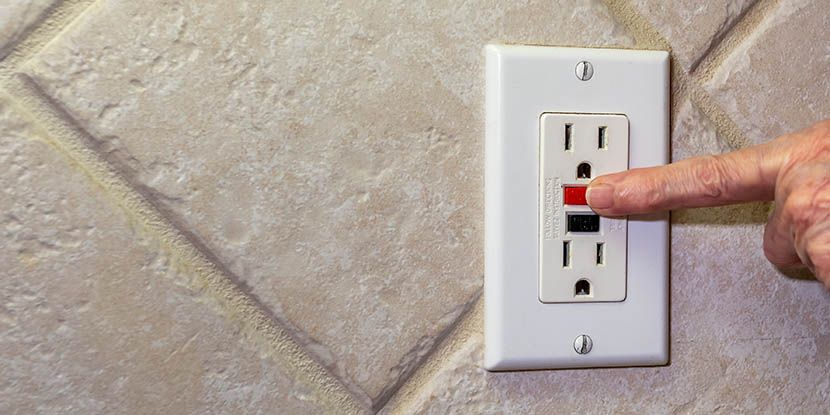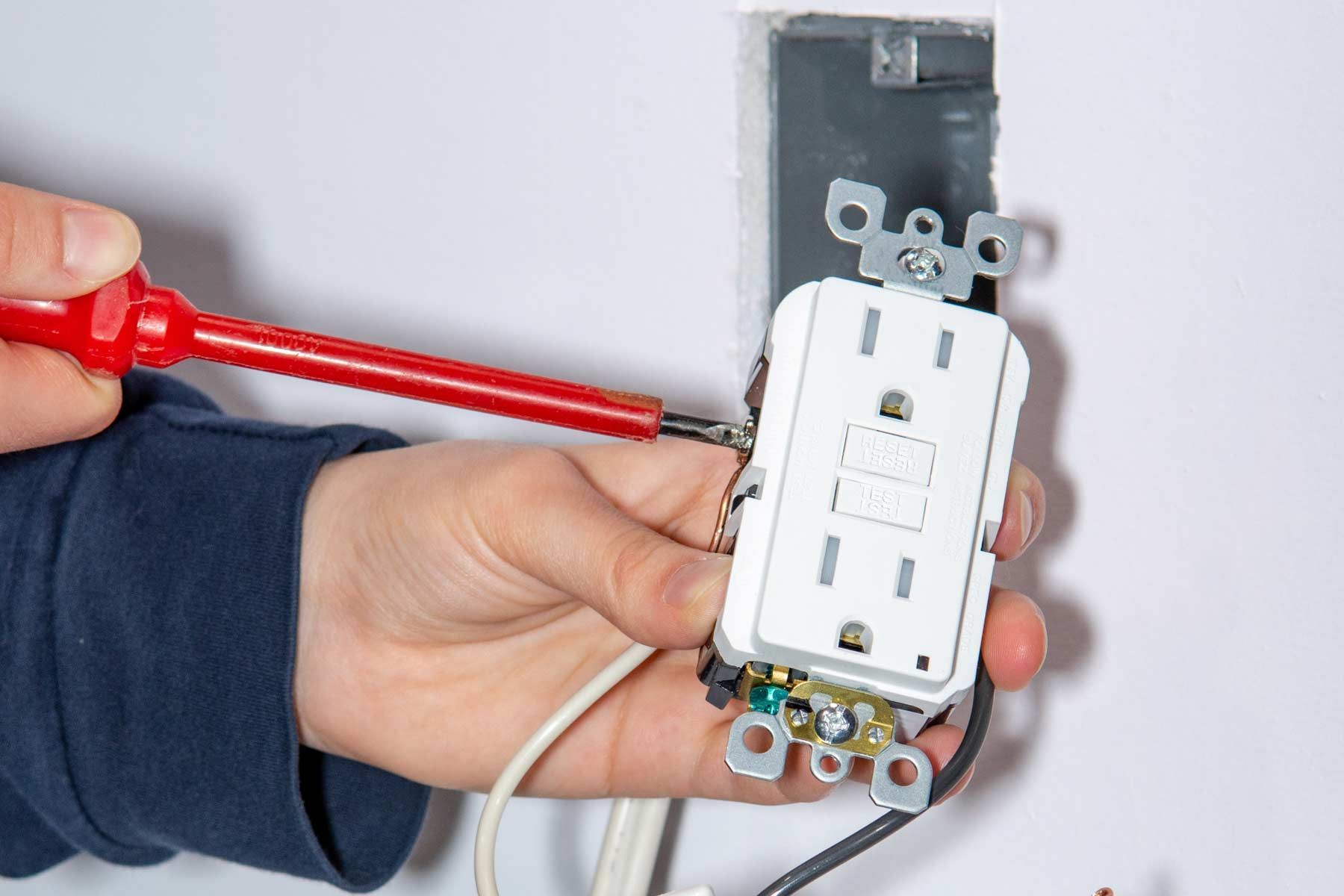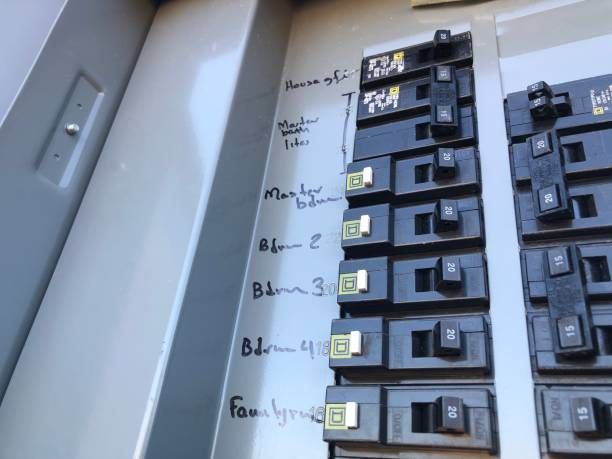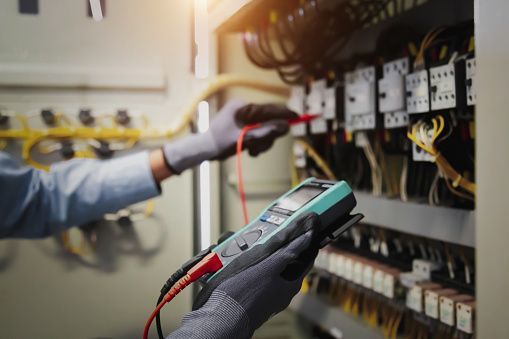Installing GFCI Circuit Breaker vs. GFCI Outlets
Ground Fault Circuit Interrupter (GFCI) devices are important when discussing electrical safety. The two types of GFCI devices are a receptacle outlet and a GFCI circuit breaker. When choosing between GFCI receptacles and breakers, remember they both serve a single purpose: shield you from electrical shocks that ground faults might cause.
Two questions now arise: What’s the difference between the two? Which is more important for your electrical system? In this article, we’ll look at the two devices and their importance in any building.
Why Use a GFCI Circuit Breaker?
GFCI breakers work as protective devices for your entire circuit. When installed into a service panel or a breaker box, it will protect your entire circuit. It adds GFCI protection to your wiring and all the other appliances and devices connected to your circuit.
Ground Fault Circuit Interrupters come in handy when all outlets connected to a circuit require protection. A good example is using the circuit breaker on a large outdoor patio space. Since all the outlets need GFCI protection, a GFCI breaker can do the trick.
How Does a GFCI Circuit Breaker Work?
A GFCI circuit interrupter monitors the electrical current flowing through a given circuit. Suppose the current differs from the returning current. In that case, the circuit breaker interrupts power in a flash, preventing a lethal current flow. GFCI circuit breakers take effect before the faulty current flow affects you.
Sometimes, the GFCI circuit breaker operates on two-slot receptacles. For instance, a naked wire in an appliance touches its metal case, which is then charged with electricity. If you touch such an appliance when your hand is wet, your body can complete an electrical circuit, causing a shock. This is where the GFCI circuit interrupter disconnects power, potentially saving your life.

What Trips GFCI Circuit Breakers?
Ground Fault Circuit Interrupters stop working or trip whenever there’s an overload or abnormal readings. The internal current transformer senses these readings. Although a trip is an ordinary thing, you should not ignore it. Apart from resetting the GFCI, it’s advisable to investigate the cause.
Many things cause the tripping, including conductive dust, worn insulation, water, or other soft grounds. Ground faults cause 80% of equipment short circuits, while insulation deterioration on cables and wires causes 90%. If you or your loved one becomes the unintended path, ventricular fibrillation, which leads to cardiac arrest, can occur.
How Long Do GFCI Breakers Last?
Ground Fault Circuit Breakers last 30 to 40 years, but the average life expectancy is 35. This is longer than the 15 to 25 years life expectancy of GFCI outlets. Before determining the right time to replace your circuit breaker, it’s crucial to understand the kind of outlet in your home.
Standard three-prong outlets, the most common in the United States, can serve you for up to 30 years. However, if the outlet is in regular use, it should be changed after 15 to 20 years. However, two-prong outlets lack grounding wire, which makes them less durable. It is therefore advisable to replace them with a three-prong outlet for better protection.

Do GFCI Breakers Go Bad?
Yes. Circuit breakers can go bad or wear out and fail. Just like any other electrical equipment, GFCIs also experience wear and tear at some point and should be replaced immediately. There are many causes of a worn-out circuit breaker, including overloading the outlet and loose wiring.
Moisture in a room can accelerate rust on the metal screws of your GFCI device, serving as wire connection points. At the same time, your circuit breaker can wear out due to age. Electrical codes dictate installing new GFCI devices if they start tripping abnormally and have been in service for over 15 years.
How to Install a GFCI Circuit Breaker?
Installing a Ground Fault Circuit Interrupter (GFCI) circuit breaker is a task that requires a skilled hand and a deep understanding of electrical systems. It involves working with the main electrical panel, which can be dangerous if not done correctly.
To ensure the safety of your home and its occupants, we strongly advise consulting a licensed electrician to install a GFCI circuit breaker. Professionals like our Mister Sparky Tulsa Electricians have the expertise to assess your electrical system’s needs properly, identify the right location for the GFCI breaker, and safely connect it to protect against electrical shocks and potential hazards.
By entrusting this task to a qualified electrician, you can have peace of mind knowing that your electrical system is in the hands of a trained expert, safeguarding your home and family from electrical accidents.
Do You Need a GFCI Outlet if You Have a GFCI Breaker?
While having both a GFCI outlet and a GFCI breaker can provide extra protection against electrical shocks, it’s not always necessary. The need for both depends on local electrical codes, cost considerations, and the specific areas in your home. GFCI outlets are commonly used in areas with water exposure, like bathrooms and kitchens – while GFCI breakers typically go in the main electrical panel for broader protection. In many cases, consulting an electrician to assess your needs and ensure code compliance is wise.
Can You Use a GFCI Outlet and a GFCI Breaker?
Yes, you can use a GFCI outlet and a GFCI breaker in the same electrical circuit. While this may provide additional protection against electrical shocks, it’s not always necessary in all situations. GFCI outlets are commonly used at specific outlets in areas with water exposure, like bathrooms and kitchens, while a GFCI breaker in the main electrical panel can provide broader protection for the entire circuit. However, ensuring they are correctly wired and do not interfere with each other’s operation is essential. Consulting a licensed electrician is advisable to ensure proper installation and adherence to safety standards and electrical codes.
Is It Better to Use a GFCI Outlet or Breaker?
GFCI outlets and GFCI breakers safeguard against electrical shocks but vary in placement and scope. GFCI outlets are positioned at individual electrical outlets, whereas GFCI breakers are integrated into the main breaker panel. Installing GFCI circuit breaker protects your entire electrical system, while a GFCI outlet only safeguards one specific outlet.
These two options ultimately depend on your specific home or business requirements. GFCI outlets are ideal if you want to comply with code requirements. On the other hand, if you seek the utmost protection available, GFCI breakers offer a superior choice.

Can You Have 2 GFCI Outlets on the Same Circuit?
You can install two or more GFCI outlets on a single circuit if desired. However, if one GFCI trips or malfunctions, it will affect all downstream outlets and GFCIs. Therefore, it is advisable to conduct monthly tests on your GFCIs to guarantee their proper functioning.
It’s worth noting that you only require one GFCI at the circuit’s inception to protect the entire circuit. Alternatively, consider using a GFCI-rated breaker as a solution.
Mister Sparky Electrician is Tulsa's On-Time Electrician in Broken Arrow, Jenks, Bixby, Sapulpa, and Claremore. Our team of licensed electricians services the Tulsa metro area. In addition to emergency electrical repairs, our residential electrician services include electrical outlet/switch repair, ceiling fan installation, lighting installation, residential wiring repair, landscape lighting installation, and home electrical inspections. Call us today at (918) 205-1309 to schedule an appointment!
You might also like

Don’t stay left in the dark about what to do.
Call us anytime day or night and experience the Mister Sparky Tulsa
difference. We’ll get you up and running safely, with expert, same-day service at prices you’ll appreciate.
Tulsa’s On-Time Electrician
9906 E 43rd Street, Ste G
Tulsa, OK 74146
Call Us Anytime, Day or Night! (918) 205-1309
License Number: #OK00215400
Emergency Services
Emergency Electrical Repairs
Electrical Inspections
Electric Panel Repair
Surge Protection
Electrical Installation & Repair
Outlet & Switch Repair
Ceiling Fan Installation
Electrical Wiring Repair
Smoke Detector Installation
Indoor Lighting Installation
Landscape and Outdoor Lighting Installation
Electric Vehicle Chargers
Electrical Panel Upgrades
Home Backup Generators
Electric Panel Upgrades
Mister Sparky® Tulsa | Terms & Conditions | Privacy | Accessibility | Site Map




